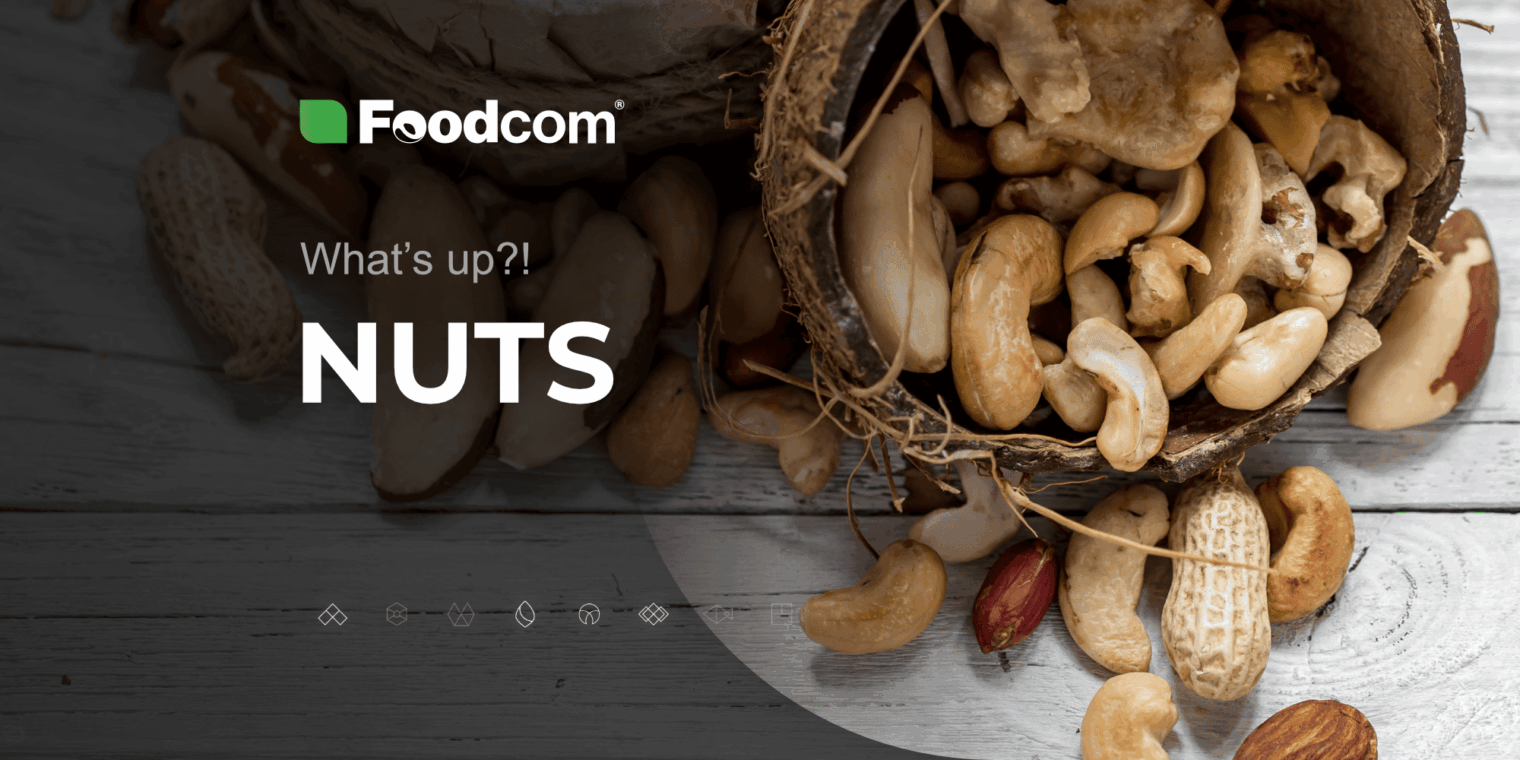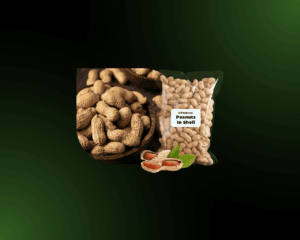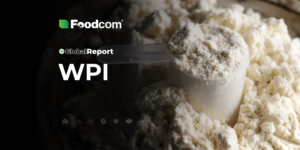- The global nut market in 2025 underwent a significant transformation, driven by climate change, logistics costs, and consumer trends.
- Nuts are increasingly being used as an ingredient in plant-based diets and functional foods.
- Supply issues and rising costs have affected the prices of pistachios, almonds, and hazelnuts, especially in countries affected by droughts and frosts.
- The importance of certification, supply chain resilience, and online sales is growing, especially in Asia and North America.
The nut market in 2024 has entered a phase of significant transformation, driven simultaneously by changing consumer preferences and pressure from external factors such as climate change, rising logistics costs and trade tensions. Nuts are increasingly seen not only as a traditional snack, but also as a key ingredient in functional products and plant-based diets. The growing importance of healthy lifestyles, increasing urbanisation and the development of e-commerce in Asia and North America are further accelerating structural changes in the sector.
Global nut market analysis 2025
The year 2024 has brought clear signs of transformation to the global nut market – both on the supply side and in the demand structure. Consumers are increasingly looking at nuts not only as a snack, but also as part of a functional diet and as a source of plant-based protein. The sector has faced climatic pressures, logistical disruptions and trade tensions, especially in the US, India, Vietnam, Iran and Turkey.
The nut market was worth USD 66.06 billion in 2024 and is forecast to grow to more than USD 112 billion by 2034 (Precedence Research, 2024). The growth of the health food category, the increasing use of nuts in processed products (milks, butters, granolas) and the popularisation of plant-based diets are driving this trend. Water access problems in California, Iran and Turkey have reduced almond and pistachio yields, and rising freight costs have particularly affected Southeast Asian exporters.
On the demand side, the healthy snacks category still dominates, but functional products and the premium segment are gaining a stronger foothold. Consumers are increasingly opting for nuts with ‘organic’, ‘fair trade’ or low carbon footprint certifications. Online sales shares are also growing, especially in China, the US and South Korea, where younger generations are looking for a variety of branded products.
Companies in the industry are beginning to relocate production and source raw materials from alternative markets such as Vietnam, Uzbekistan and India, strengthening the resilience of supply chains.
Analysis of key nut types
Pistachios
The year 2024 brought very strong dynamics to the pistachio market – both in production and consumption. The United States, as the world’s largest pistachio producer, recorded one of its best harvest seasons, reaching more than 500 000 tonnes. At the same time, Iran – the second largest player – faced hydrological problems and export disruptions, which influenced the US and Turkey to take some of its market share.
The increase in interest in pistachios was driven not only by health reasons, but also by cultural changes and viral phenomena such as the popularity of sweet pistachio cream products, especially in Arab countries and Southeast Asia. Pistachio prices have risen sharply in the second half of the year, not only due to demand, but also through constraints in port and refrigerated container capacity. It is worth noting that pistachios are also becoming a ‘second-choice’ export commodity for countries that are phasing out the cultivation of almonds due to their higher water requirements.
Almonds
Almonds continue to dominate the nut market, although the sector has faced a number of challenges in 2024. California, accounting for more than 80% of global production, has reduced acreage under cultivation for the third consecutive year due to water scarcity and rising labour costs.
Spain also supplies almonds to the market, but their quality, particularly in terms of size and oil content, is lower than that of Californian varieties.
Demand for almonds remains high, especially in the functional food sector – in the production of plant milks, protein bars and creams. Trade problems with China and the European Union and increasing competition from Australia have forced US exporters to diversify their sales channels, including through Vietnam and Malaysia. In the long term, the sector’s continued growth will depend on its ability to adapt to climatic conditions and technological support for production.
Hazelnuts
The hazelnut sector faced major disruptions in 2024. At the beginning of the season, Turkey experienced abnormal snowfall and frosts that significantly damaged young flower buds on hazelnut trees. As a result, yields were as much as 20-25% lower than in 2023, which immediately translated into higher commodity prices on commodity exchanges and futures markets.
Supply shortages from Turkey have strengthened the position of smaller producers – such as Italy and Spain – but their production capacity remains limited. Georgia has increased exports, but is still unable to completely fill the global supply gap.
Rising hazelnut prices in 2024 have forced many confectionery and cream producers to renegotiate contracts and seek alternative raw materials or change product formulations. As a result, the sector will also face continued cost pressures in 2025, especially in Europe, where demand for hazelnuts in the production of hazelnut spread chocolates and creams remains very high.
Cashew nuts
The cashew nut market in 2024 operated in a tight balance between limited supply and continued strong demand. Vietnam and India, the main cashew processors, struggled with higher labour and energy costs, as well as seasonal disruptions in the supply of raw material from African countries such as Côte d’Ivoire, Nigeria and Benin.
Cashew nuts remain one of the most versatile and sought-after products among consumers interested in a plant-based diet – they form the basis of plant-based milks, vegan cheeses and pastes, making them extremely popular in Europe and North America. Despite cost pressures, the sector has maintained stability thanks to an increase in the share of processed products, which provide higher margins and better price resilience. In the longer term, it will be important to tighten trade relations between Africa and Asia and shorten logistics chains.
Pecans
Although pecans are still a relatively niche segment of the pecan market, 2024 was a year of gradual expansion for them both geographically and in terms of product. The United States, mainly Georgia and Texas, maintains a dominant production position, but the Mexican crop and development initiatives in South America are increasingly attracting attention.
Pecans are gaining popularity among consumers looking for an alternative to walnuts. They are milder in flavour and easier to use in bakery, confectionery and nut butters. In 2024, there has been increased interest in this raw material in China and South Korea, while in parallel, exports to the EU have faced restrictions related to product grading and the lack of harmonisation of phytosanitary certificates. In the long term, pecans could become an important player in the premium segment, especially if the stability of supply outside the US can be increased.
Macadamia nuts
Macadamia remains one of the most luxurious nut species with high unit value but limited availability. Major producers such as Australia, South Africa and Kenya have increased acreage in 2024, but yields have not kept pace with growing global demand. Particularly intense demand growth has been seen in Japan, Korea and the Middle East, where macadamia nuts are used in the confectionery and cosmetics industries.
In response to rising production and processing costs, companies are switching to product innovations including macadamia milk, protein creams and dietary supplements. Low retail margins and high barriers to entry into production (long tree growth period, capital intensive plantations) remain a challenge. In the short term, supply may not keep up with demand, which will translate into further price increases and selective market development.
2025 – trends and forecasts in the nut market
The year 2025 began with trade tensions between the US, the EU and China. In response to the US tariffs, the EU plans to reintroduce retaliatory tariffs on peanut butter and dried cranberries, among others, and place additional duties on US almonds.
The US, as the market leader in almonds and pistachios (more than 80% and 60% of global supply), could lose up to US$6bn a year (UC Davis, 2024). China, although previously a significant importer, has reduced its direct purchases and started to import through third countries such as Vietnam and Malaysia.
Additional challenges include rising transport and production costs in countries such as Thailand, Côte d’Ivoire and Benin. For selected raw materials such as cashews, macadamias and pecans, demand is outstripping supply, inevitably leading to further price increases.
Weather and geopolitical events can also have a negative impact on the market. The frosts that hit Turkey at the beginning of 2025 significantly reduced the projected hazelnut crop, and rising tensions in the Middle East – including the destruction of port infrastructure in Iran – could disrupt pistachio exports in the coming months.
At the same time, there are strong signs that the sector is adapting: investing in irrigation technology, developing climate-resilient crops and building local markets in Asia and the Gulf countries.
“2024 has made it very clear how much the nut market is affected by climate change, the geopolitical situation and logistical issues. In 2025, we expect prices to continue to rise in many segments and raw material availability to become increasingly challenging. Therefore, a flexible approach to building a portfolio of suppliers, working with alternative markets and anticipating regulatory changes will be key. Where price used to be the main consideration, today availability, quality certifications and resilience of the entire supply chain are increasingly important.” – International Commodity Trader
Global Foodcom S.A. reports.
Want to know how the nut market will change in 2025? Discover the latest trends and insights that will shape the next months of 2025. Visit our blog as we regularly update our global reports. Stay up to date with Foodcom S.A.



![Przegląd rynku mozzarelli w 2025 [Global Report] Przegląd rynku mozzarelli w 2025 [Global Report]](https://foodcom.pl/wp-content/uploads/2025/03/Przeglad-rynku-mozzarelli-w-2025-Global-Report-300x150.png)




